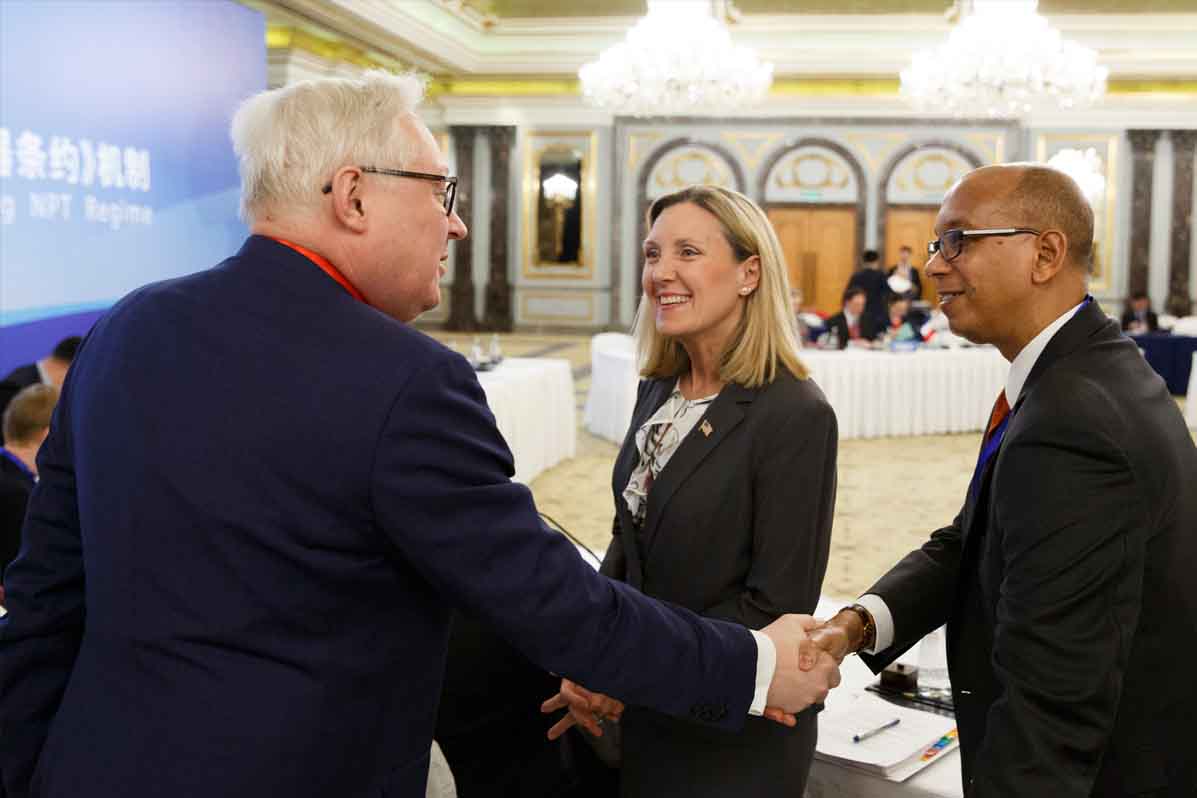One of the pillars of nuclear-arms control became history on 2 February, with the expiry of the 60-day deadline that the United States (US) had given Russia to save the 1987 Intermediate-Range Nuclear Forces (INF) Treaty. Russia blithely let the deadline pass. But so did the European Union (EU), abetted by Germany. Europe is now entering a potentially dangerous period and must play a much more active role in the nuclear-arms debate.
The INF Treaty prohibits the stationing of medium-range nuclear missiles in Europe. Its near-certain demise dims prospects for extending the US-Russian New Strategic Arms Reduction Treaty when it expires in 2021. And without a contractual nuclear-arms framework between Russia and the US, the international Treaty on the Non-Proliferation of Nuclear Weapons cannot survive.
Non-proliferation depends on the two nuclear superpowers’ willingness to subject themselves to arms control and verification. If the US and Russia instead engage in a nuclear-arms build-up, smaller powers will follow suit, because they believe that doing so makes them invulnerable. North Korea and Iran are just the first examples of this.
An extension of the INF Treaty to prevent a new nuclear-arms race in Europe would have been worth fighting hard for. As the first – and, so far, only – true disarmament agreement, it gave the continent previously unheard-of security from nuclear confrontation. But instead of high-level summits and shuttle diplomacy to rescue the treaty, all we got were whistle-stop efforts.
The chances of saving the INF Treaty are now negligible. Both the US and Russia want to free themselves from all nuclear-arms limitations – not to face off against each other, but because they now regard China as their true nuclear adversary. Because China was not on the international radar for disarmament talks in the late 1980s, it is not part of any current arms-reduction and disarmament treaty. But today, about 80 percent of China’s nuclear arsenal is in exactly the medium ranges that the INF Treaty prohibits for the US and Russia. Despite their public war of words over real or alleged treaty violations, the US and Russia share an overriding goal: arming themselves against China.
Germany and Europe are thus of secondary importance to the two nuclear superpowers. From the perspective of the US and Russia, a new nuclear-arms build-up in Europe would represent only collateral damage. But for Europe, it may bring dreams of a common European Foreign and Security Policy to a sudden end. If the North Atlantic Treaty Organization (NATO) were to launch serious discussions about the renewed stationing of medium-range nuclear missiles in Europe, Eastern European members – sceptical that Western Europeans (especially the Germans and the French) – would be willing to die for their freedom, would almost certainly follow the lead of the US. Meanwhile, Germany and other parts of Western Europe would likely experience massive political turmoil.
Faced with this scenario, Europe must now try to apply some kind of brake to current development and gain time for negotiations, without annoying US President Donald Trump and making him likelier to leave the alliance. The debate must begin within the EU, which is not formally a negotiating partner on the nuclear-arms issue and currently is standing on the side-lines. With Trump clearly unwilling to inform NATO members, let alone the EU, about his next steps, Europe must assert itself.
As a first step, it should take greater responsibility for Eastern Europe’s military security by deploying more European – and more German – conventional troops in these countries. This must be accompanied from the start by talks between Europe and Russia on conventional and nuclear weapons. The first step is arms control, an instrument intended for difficult times. Confidence-building measures, such as mutual inspection of military capabilities and development, can help to rebuild trust, which is a prerequisite for subsequent arms reduction and disarmament.
An audit of the Russian SSC-8 (9M729) cruise-missile system, which the US claims violates the INF treaty, is of course a top priority. Although the US and Russia acknowledged inspections under the agreement only until 2001, revitalising the treaty’s Special Verification Commission would offer a way forward here.
Russia recently made a verbal offer to open its nuclear arsenals for inspection – on the precondition that the US does the same. But US agreement looks unlikely, because the Trump administration seems more focused on countering China’s nuclear capabilities than on Russia and Europe. Here, Europe, and particularly Germany within NATO, must take a clear stance toward the US. Even a conditional US acceptance of verification by Russia would represent progress.
Russia’s willingness to engage in nuclear-arms control with Europe, meanwhile, will depend not least on the readiness of France and the United Kingdom (UK) to allow inspections of their own arsenals. France and other countries that want European security and defense policy to become more independent from the US must be prepared to take such measures. The aim must be to return to a reliable and credible European security architecture, something that ceased to exist when Russia invaded Crimea and fostered insurrection in Eastern Ukraine.
Pacifying this conflict is probably a key precondition for re-engaging in arms talks with Russia. This will require a United Nations (UN) peacekeeping mission that – robustly if necessary – maintains the truce between Ukraine and Russian-backed separatists and oversees the removal of heavy arms from Eastern Ukraine. Germany is a non-permanent member of the UN Security Council in 2019. Its overarching task should be to pull talks about a UN mission in Eastern Ukraine out of the mud and drive them to a successful conclusion.
This would clear the path for building a new European security architecture, and enable Europe to play a more central role in containing the new nuclear-arms race.
Sigmar Gabriel, former German Minister of Foreign Affairs, is a member of the Bundestag.
